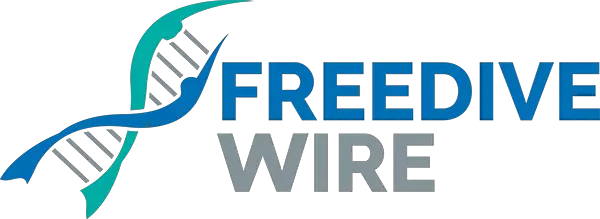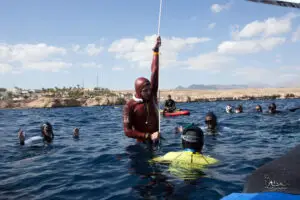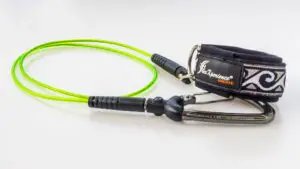Rome wasn’t built in one day, you won’t be able to do the split tomorrow and you are not going to increase your breath hold by 3 minutes overnight.
You might have some freediving goals for yourself in 2018. Perhaps a CWT dive to 50 m, or a 7-minute breath hold. Chances are that you have already trained for over 20 hours to get there. But what if that training intensity doesn’t last throughout the year?
In this article you can read how to create a daily ritual to get you to your goals. You will achieve more by 15 minutes of training per day over the course of a year, than by training several hours per day for a few weeks. No matter what the goal. You also get a blueprint to design your own 15-minute daily ritual.
The most important 15 minutes of the day
If you are committed to creating a daily ritual for a specific purpose, you should design it well. What are you training for, and what will you be able to do every day for 15 minutes? Your ritual should be:
- Easy – It cannot become an obstacle or you won’t be motivated to put in the effort
- Scalable – What if you get better? After three months, will you need to put in 30 minutes or can it still be done in 15 minutes?
- Mobile – You should be able to do this anywhere, from a hotelroom in Ethiopia to a campsite in Canada, otherwise the simplest life change or travels are going to throw you off.
Designing a ritual
I’ll first show you my 15-min ritual, so that you see how you can use a ritual for nearly anything, and then will get into rituals more specific for freediving. My 2018 challenges have, for a change, not much to do with freediving. I want to have done a 6 km open water swim and a full planche pushup by the end of the year.
What can I do for 15 minutes per day that works toward both of these goals? My biggest struggle during swimming, ironically, is breathing – as soon as I get my airways partly out of the water I have poor form and lose momentum. My biggest struggle for the planche pushup is wrist mobility and core strength. Of those two, wrist mobility is my bigger concern.
The weakest link in my swimming is the position of my arms at the end of the strokes. I visualize my swims for 5 minutes, and while doing so I go through the movements slowly on land. I try to mimic the arm movements and breathing I need to do in the water as best as I can while standing up.
By visualizing and performing motions you strengthen the neural pathways for those motions, whether they are for freediving, swimming or weightlifting. You should start with slow-motion and can record yourself every now and then to be sure you are going through the right motions.
I have no delusions that I will be able to become a perfect swimmer with 5 minutes of daily dry practice. But with this ritual my sporadic pool training will become much more effective.
I further incorporate 5 minutes of wrist mobility exercises and specific pushup exercises and handstands that lead up to the planche.

Rituals specific for freediving
Of course, you might not care about swimming several km, let alone a planche pushup. Here are some exercises that will improve your freediving and are easy to incorporate into your daily routine.
- Breathing exercises are the easiest to incorporate into your daily ritual. You can start with a few minutes of alternate nostril breathing, followed by a range of motion exercise (see here). These two exercises will do wonders for your lung volume.
- Flexibility exercises are a simple thing to incorporate in your daily ritual. Simple daily intercostal and diaphragm stretches can be done within 10 minutes.
- If you are a compulsory note taker, you can measure your heart rate variability (I use the app HRV4training), heart rate or the time of a single breath hold. Once you have a few weeks of data you will be able to decide on your training intensity using these numbers.
There are a also a lot of breathing exercises from Sara Campbell’s yoga courses that you can use.
Example of a daily ritual for freediving
This was my daily ritual when I thought I was getting recurring trachea squeezes (they turned out not to be squeezes, but that’s a different story):
- One breath test (modified from Eric Fattah’s technique) – 4 min
- Alternate nostril breathing or unguided meditation – 6 min
- Trachea stretching – 5 min
Commit to consistency
Most new gym memberships are sold in January and end up going unused. New years resolutions are everywhere, and most of them have something to do with health. Mid-February, the rush is pretty much over. Perhaps it is because the new gym users don’t like their gyms, but it is more likely that these people just can’t commit to spending two or three sessions in a gym every week.
You should start with something that takes very little time, but make sure to take that time every day.
Also remember that your goal is not a stick or carrot. Your life is not going to be better all of a sudden because you made it to a 6-minute breath hold. Neither should you consider yourself a total failure if you don’t make it to that 6-minute breath hold. If I do a 2 km open water swim this year, that’s a major improvement. If I do a 6 km swim in April, I’m going to commit to a longer swim later in the year.
The continual improvement is much more rewarding than hitting an arbitrary number. Focus on consistency, and not on your goal.


